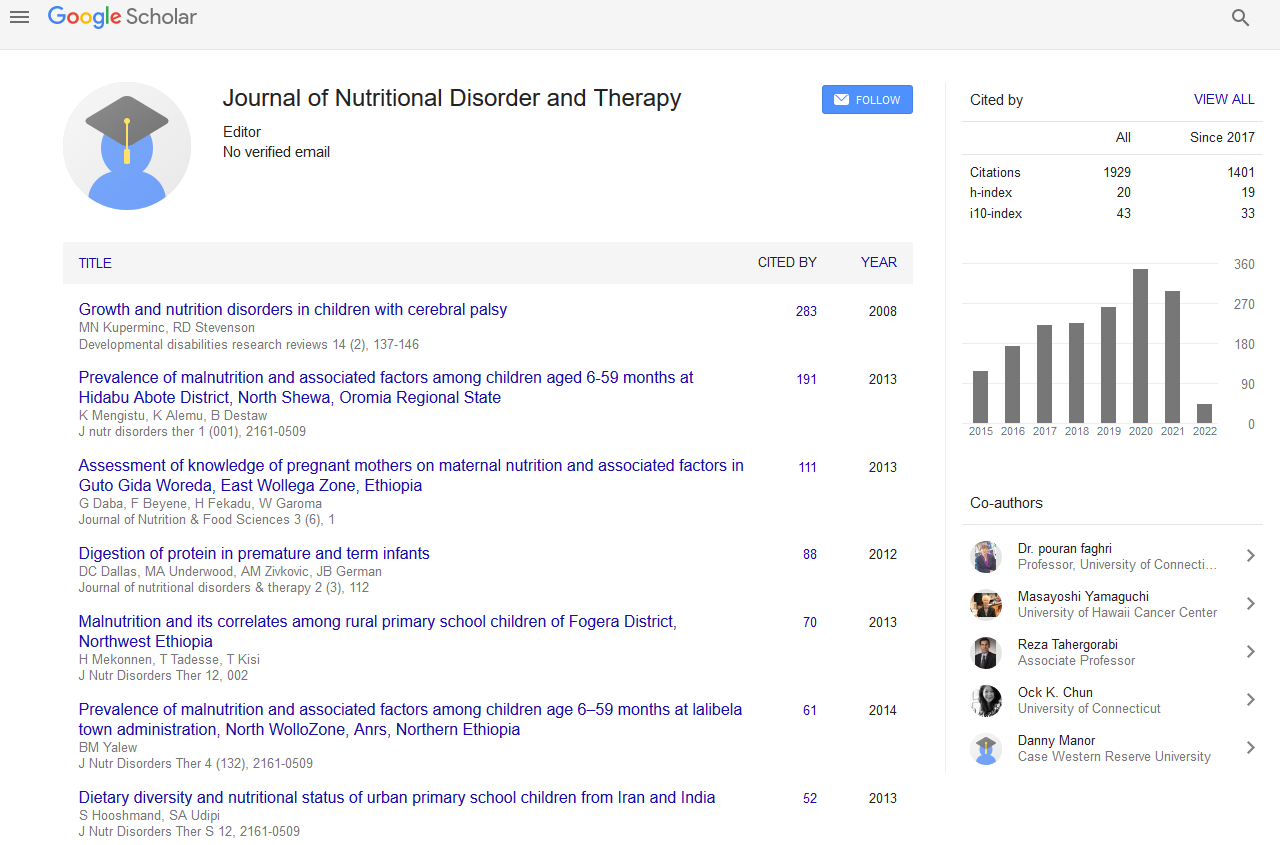Indexed In
- Open J Gate
- Genamics JournalSeek
- Academic Keys
- JournalTOCs
- Ulrich's Periodicals Directory
- RefSeek
- Hamdard University
- EBSCO A-Z
- OCLC- WorldCat
- Publons
- Geneva Foundation for Medical Education and Research
- Euro Pub
Useful Links
Share This Page
Journal Flyer

Open Access Journals
- Agri and Aquaculture
- Biochemistry
- Bioinformatics & Systems Biology
- Business & Management
- Chemistry
- Clinical Sciences
- Engineering
- Food & Nutrition
- General Science
- Genetics & Molecular Biology
- Immunology & Microbiology
- Medical Sciences
- Neuroscience & Psychology
- Nursing & Health Care
- Pharmaceutical Sciences
Linkage analysis of primary microcephaly (MCPH) in Pakistani families
15th International Conference on Clinical Nutrition
May 24-26, 2018 | Vienna, Austria
Iram Naz
Xian Jiaotong University, China
Posters & Accepted Abstracts: J Nutr Disorders Ther
Abstract:
This study focuses on the inherited disease, autosomal recessive primary microcephaly (MCPH). MCPH is characterized by reduction in head circumference (3�??4 standard deviations below age and sex average) caused by underdevelopment of the fetal cerebral cortex. This is accompanied with variable degrees of mental retardation. MCPH demonstrate genetic heterogeneity and to date eight loci (MCPH1-MCPH8) and eight genes have been identified. These MCPH genes are involved in important cellular functions, mainly related to mitosis of neurons (neurogenesis), cell cycle regulation, organization and orientation of mitotic spindle fibers and centrosomal production of microtubules. In the present work, two families showing primary microcephaly were studied. DNA samples from affected and normal individuals from both families were tested for linkage to known MCPH loci. All known loci were excluded from both families because of absence of linkage and homozygosity. The disease loci on some other cytogenetic location are yet to be discovered. Autosomal recessive primary microcephaly MCPH displays genetic heterogeneity with eight loci mapped to date (MCPH1 to MCPH8). MCPH1 maps to chromosome 8p23, with gene name microcephalin. The microcephalin gene has a role in regulating the size of the cerebral cortex. It is considered to play a role in chromosome condensation regulation and in DNA damage repair system. Mutation in this gene thus causes neuronal death during fetal development and neurogenesis. The aim of the study was to find the causes and effects of these mutations. In this study, the DNA samples of affected and normal individuals from both families (A, B) were tested for linkage or exclusion to known eight MCPH loci by polymorphic satellite markers mapped within their linkage intervals. Affected members of these two families (A, B) were not homozygous for any of the markers linked tightly to all known MCPH loci (MCPH1 to MCPH8). All known loci were successfully excluded. These findings suggest that the disease locus responsible for MCPH in these families is yet to be discovered. This implies the plausibility of a novel locus. Thus, genome wide research of these MCPH families should be done in future, which would lead to the mapping of a novel region associated with primary microcephaly and will illustrate the working of this disease even further. dr.ir4m@yahoo.com


